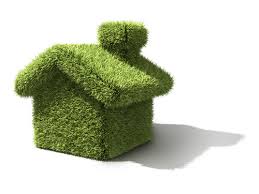What are the three most important things that are required for a civilized life? What are those things that are promised by the government of countries all over the world to all its citizens irrespective of whether or not the promises are fulfilled? That they are unfulfilled more often than not is a different issue altogether. Internationally, food, clothing and shelter are recognized to be the basic facilities that are required for life to function. Of the three, I am going to be talking about one that is fast growing to be a booming industry in terms of awareness about it and the number of people turning towards it. Shelter. Every human needs it. Not everyone has it. And those who do, spend a lot of valuable time and money, wasting resources that the entire world can use.
Why do I make such a statement? What could possibly be done about something as simple as shelter? The answers to these questions are many and varied. It is possible to make highly environment friendly. Many homes these days are trying to adopt energy saving techniques. But some of these could use materials that may harm the environment. But the environment, degraded as is it, cannot withstand much more cruelty at our hands. Thus, we have to construct houses that are not only energy efficient, but also do not harm the environment during its construction or use.
So, we have to first ask ourselves what a green building is. A green building, or one that is built of a sustainable design, is one that increases the efficiency with which buildings, along with their site of construction use water, materials, energy, etc. while at the same time doing its best to reduce the impacts of the building on health of those around and the environment over the building’s life cycle. Green building is not just about what is within the walls of the building but also extends to encompass the immediate community, site planning, and the use of land as well.
Next, we have to ask ourselves why green buildings are important. This is because community growth and development has a huge impact on the nature and the environment. All the processes, right from design, manufacture, construction, and operation of the buildings that are lived in, and worked in are inherently responsible for the consumption of our natural resources.
The following stats give an idea of how much energy, materials, land, etc. that buildings use in the United States alone.
In the United States, buildings account for:
- 39% of total energy use
- 68% of total electricity consumption
- 30% of landfill waste
- 38% of carbon dioxide emissions
- 12% of total water consumption
There are numerous benefits to construction and commissioning of green buildings. Here are a few of them. The most important benefits are environmental. Green buildings can go a great way in enhancing and protecting the biodiversity and the ecosystem of the area that they are in. They also improve the quality of air and water of the locality. Additionally, they reduce the waste streams and lastly, help in conservation and restoration of natural resources.
Moving on to the economic effects of green buildings, it is proven that if constructed according to standards, green buildings can reduce operating costs to a great deal. This is in addition to improving the productivity of its occupants, and enhancing the overall profits and asset values. Thus, consequently, they optimize the life cyclic performance of the area.
There are social advantages to construction of green buildings too. It is obvious that they improve the health of its occupants and keep them in their comfort zone. They also reduce the strain on the utilization of the local infrastructure. Thus, green buildings take the quality of life lived to a totally new level.
All of the advantages reported above are not mere figments of my imagination, but are facts as ascertained by an organization in California as the benefits of using green buildings.
In conclusion, what I am trying to convey through this article is that if one did not know what green buildings were or what their benefits are, one can claim ignorance and remain blissfully happy, until the day that they realise all the damage that they do today will directly affect their progeny tomorrow. But others who are aware of all the positives of green buildings must do their best to implement such structures or at least parts of them in their houses, or local area or community. This does not increase expenditure, except perhaps at the time of construction. But after that, it is profit all the way.
Awareness is not enough. It is a thing of the past now. Implementation is the order of the day. Implement today. Do not become an environmental criminal.



Leave a Reply